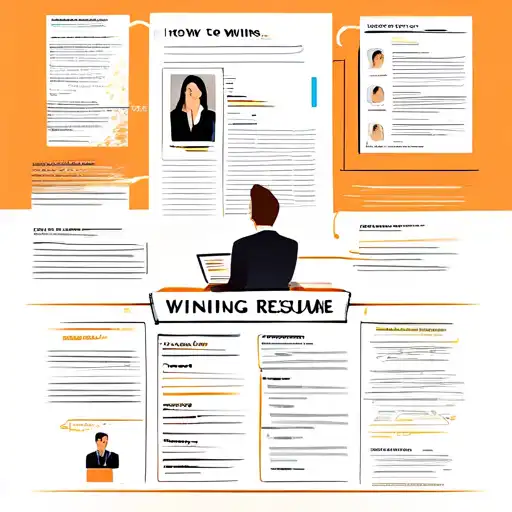Introduction
In today's competitive job market, having a winning resume is more important than ever. It's your first opportunity to make a great impression on potential employers. This guide will walk you through the steps to craft a resume that stands out from the crowd, highlighting your skills, experience, and achievements in the best possible light.
Understanding the Basics
Before diving into the details, it's crucial to understand what makes a resume effective. A well-structured resume should be concise, tailored to the job you're applying for, and free of errors. It should also include relevant keywords to pass through Applicant Tracking Systems (ATS).
Step 1: Choose the Right Format
There are three main resume formats: chronological, functional, and combination. The chronological format is the most common, listing your work history in reverse order. The functional format focuses on skills and experiences, while the combination format blends both. Choose the one that best suits your career stage and the job you're targeting.
Step 2: Highlight Your Contact Information
At the top of your resume, include your full name, phone number, email address, and LinkedIn profile (if applicable). Make sure this information is up-to-date and professional.
Step 3: Craft a Compelling Summary or Objective
A resume summary or objective gives employers a snapshot of your professional background and career goals. Keep it brief and impactful, focusing on what you can bring to the table.
Step 4: Detail Your Work Experience
List your work experience in reverse chronological order, including job titles, company names, dates of employment, and key responsibilities and achievements. Use bullet points for readability and start each point with action verbs.
Step 5: Showcase Your Skills
Include a skills section that highlights your relevant abilities, both hard and soft skills. Tailor this section to the job description to show you're a perfect fit.
Step 6: Add Education and Certifications
List your educational background, including degrees, institutions, and graduation dates. Also, include any relevant certifications or professional development courses.
Step 7: Include Additional Sections If Relevant
Depending on your experience, you might want to add sections for volunteer work, publications, or languages spoken. These can provide a more complete picture of your qualifications.
Final Tips
Before submitting your resume, proofread it carefully for errors, and consider having a friend or mentor review it. Also, save your resume as a PDF to ensure formatting stays intact across devices.
Conclusion
A winning resume is your ticket to landing interviews and advancing your career. By following these steps, you can create a resume that effectively showcases your strengths and sets you apart from other candidates. Remember, your resume is a living document—update it regularly as you gain new skills and experiences.
For more career advice, check out our guides on interview tips and networking strategies.
